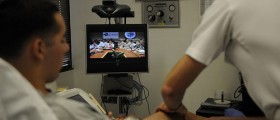
Causes of fungal sinus infections
The two types of fungus responsible for fungal sinus infections are Aspergillus and Curvularia, and between the two, Aspergillus is more common. All fungi thrive in dark and moist places, just like sinuses. They usually feed on dead organic matter but in certain conditions they can spread to the surrounding living tissue as well, which is called invasive fungal sinusitis.
There are several types of fungal sinus infection. Allergic fungal sinusitis is an allergic reaction to the fungus antigen. Granulomatous invasive fungal sinusitis is rare and it is mostly seen only in North Africa and in India. Chronic indolent sinusitis is an invasive form of sinusitis that can affect even those with a healthy immune system, but it is usually seen outside of the US.
Mycetoma fungal sinusitis is characterized by a so-called fungal ball in the sinus cavity. It is non-invasive and causes some inflammation and discomfort. Fulminant sinusitis is the most severe form of fungal sinusitis. It is seen almost exclusively in those with a weak immune system, it is aggressive and can lead to bone damage.
As it is explained, fungal sinusitis is rare and usually seen only in people with a compromised immune system, such as HIV/AIDS patients, cancer patients on chemotherapy and diabetics as well. The risk of developing a sinus infection increases if a person lives in a mold-infested environment.
Symptoms of fungal sinus infection
The symptoms of fungal sinus infection are pretty much the same as those of sinusitis caused by other agents. They include pain and pressure in cheeks, forehead, behind the eyes, puffy eyes, clogged ears, toothache in upper jaw, sore throat, runny nose, nasal congestion, fever, fatigue and lethargy.
The pain and the pressure usually get worse if the head is placed between the knees while standing, which is the classic tell-tale sign of a sinus infections.
Since fungal sinus infections are so rare, they are often mistaken for bacterial sinusitis. Doctors prescribe antibiotics but as the fungus cannot respond to then, the condition remains the same or even worsens. That is the sign that more tests should be done, like an x-ray or a culture test. Fungal sinusitis can only be cured with anti-fungal medications.
- www.nhs.uk/conditions/sinusitis-sinus-infection/
- www.cdc.gov/fungal/diseases/fungal-eye-infections/index.html
- Photo courtesy of OpenStax College by Wikimedia Commons: commons.wikimedia.org/wiki/File:724_Paranasal_Sinuses.jpg

















Your thoughts on this
Loading...